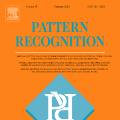With the advent of Internet of Thing (IoT), and ubiquitous data collected every moment by either portable (smart phone) or fixed (sensor) devices, it is important to gain insights and meaningful information from the sensor data in context-aware computing environments. Many researches have been implemented by scientists in different fields, to analyze such data for the purpose of security, energy efficiency, building reliability and smart environments. One study, that many researchers are interested in, is to utilize Machine Learning techniques for occupancy detection where the aforementioned sensors gather information about the environment. This paper provides a solution to detect occupancy using sensor data by using and testing several variables. Additionally we show the analysis performed over the gathered data using Machine Learning and pattern recognition mechanisms is possible to determine the occupancy of indoor environments. Seven famous algorithms in Machine Learning, namely as Decision Tree, Random Forest, Gradient Boosting Machine, Logistic Regression, Naive Bayes, Kernelized SVM and K-Nearest Neighbors are tested and compared in this study.
翻译:随着通过便携式(智能电话)或固定(传感器)装置每时每刻收集的互联网(IoT)和无处不在的数据的到来,重要的是从环境意识计算环境中的传感器数据中获得洞察力和有意义的信息。许多研究由不同领域的科学家进行,目的是为了安全、能源效率、建设可靠性和智能环境的目的分析这些数据。一项许多研究人员感兴趣的研究是,在上述传感器收集环境信息的地方使用机械学习技术进行占用探测。本文提供了使用和测试若干变量来探测占用情况的方法。此外,我们展示了利用机器学习和模式识别机制对所收集的数据进行的分析,以确定室内环境的占用情况。在机械学习中,有七种著名的算法,即决策树、随机森林、梯级推力机械、后勤倒退、纳米贝斯、凯尔内尔化SVM和K-Nearest Nieghbors进行了测试和比较。




